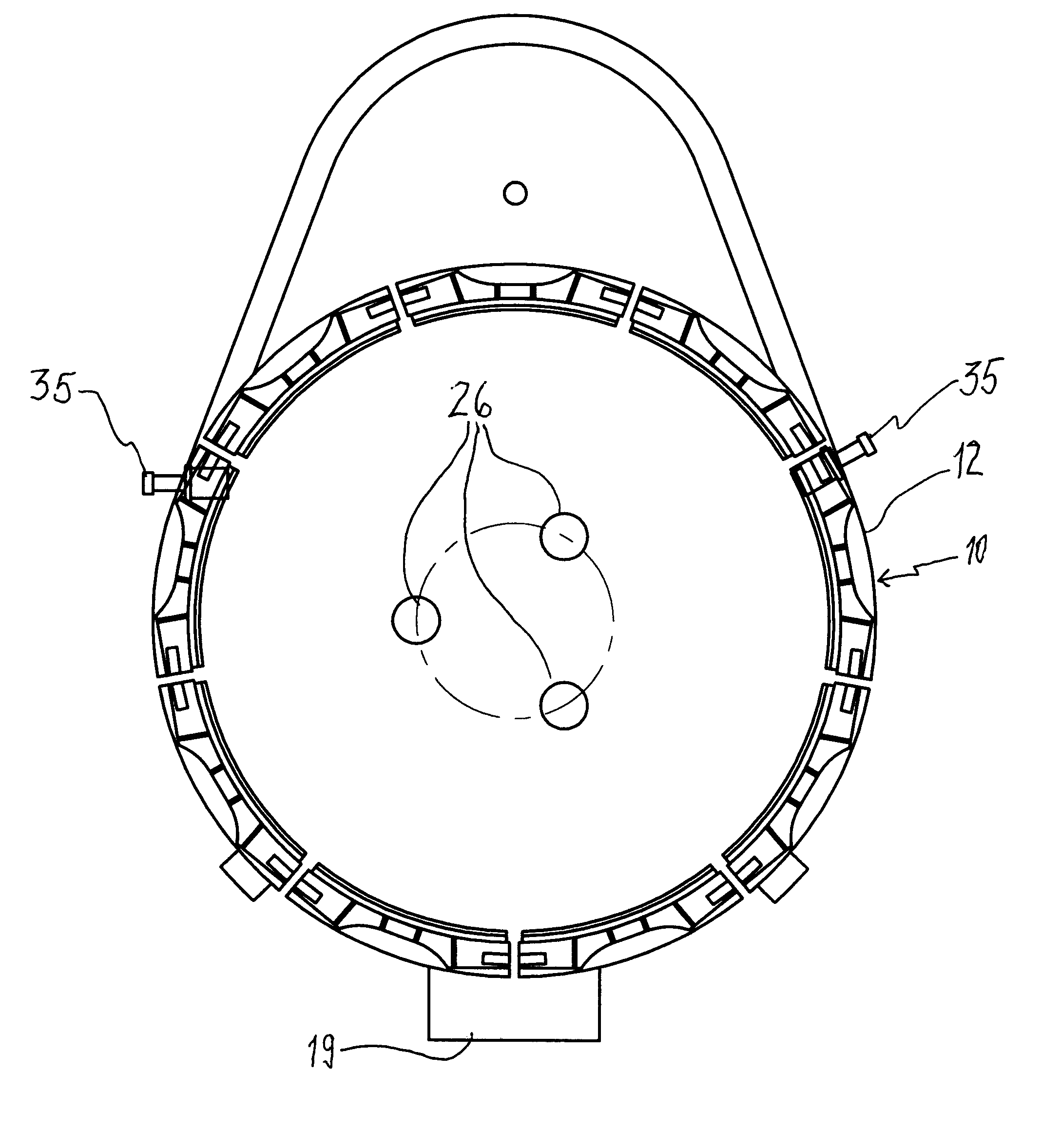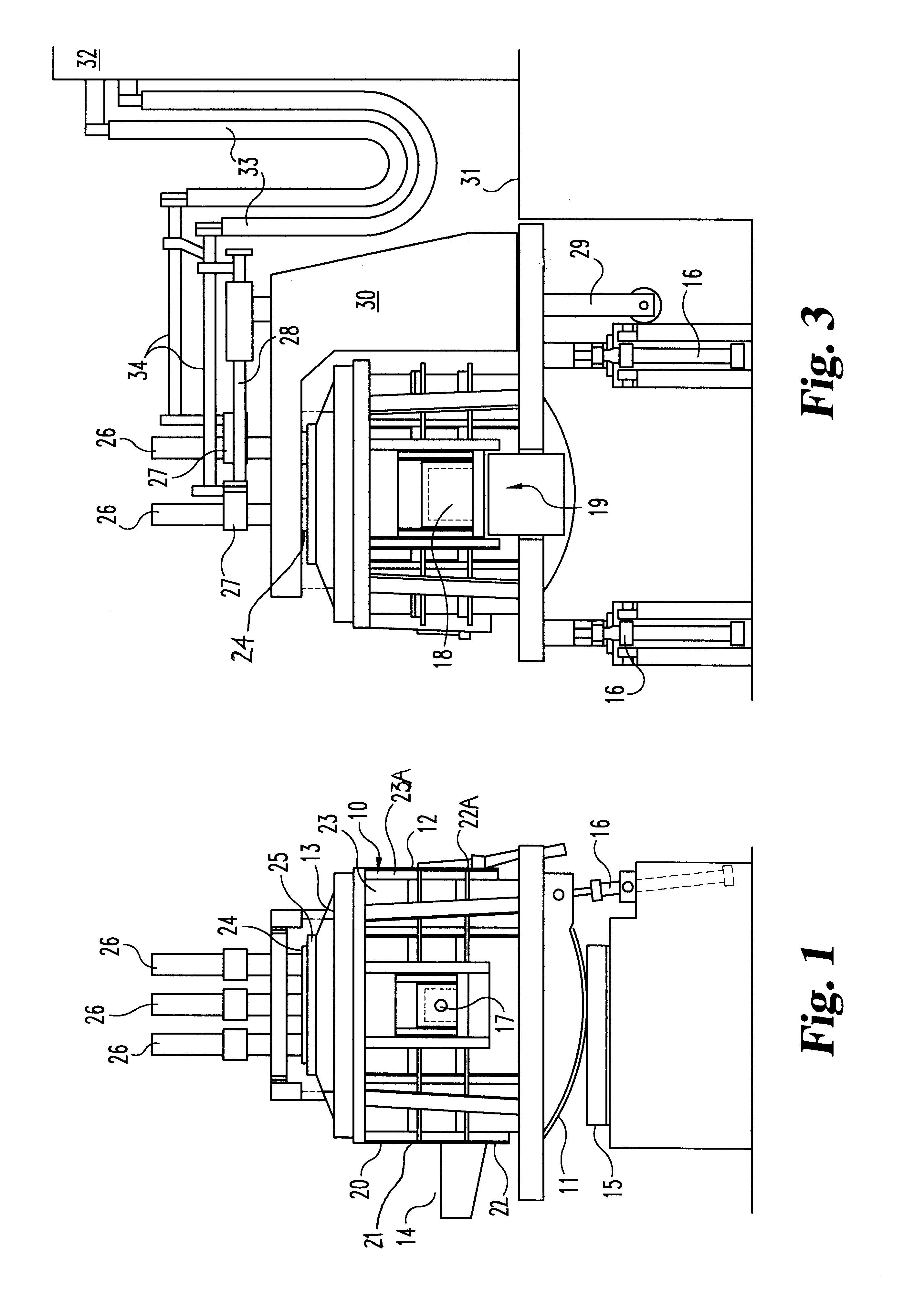Method for making steel with electric arc furnace
a technology of electric arc furnace and steelmaking, which is applied in the field of steelmaking, can solve the problems of increasing electrode erosion, affecting and causing co and nox to rise, etc., and achieves the effects of reducing the natural gas or propane rate through the burner, reducing the oxygen rate, and reducing the efficiency of process improvemen
- Summary
- Abstract
- Description
- Claims
- Application Information
AI Technical Summary
Benefits of technology
Problems solved by technology
Method used
Image
Examples
Embodiment Construction
Electric arc furnace (EAF) 10 is generally cylindrical in shape, and has a generally spherical shaped bottom 11, sidewalls 12 and a roof 13. Although described above with reference to an AC EAF furnace, the invention may also be used with a DC EAF furnace. In either case, the bottom 11 is refractory lined, and the sidewalls 12 are generally refractory lined to above the slag line. The EAF also has a taphole / spout 14. The EAF rests on a rocker rail 15, and is capable of being tilted by hydraulic cylinders 16 to discharge the molten metal from the furnace through spout 14.
Also, provided in sidewall 12 is slide door 17 for charging and a backdoor 18 with a slag apron 19 for discharge of the slag from the furnace. The electric arc furnace 10 may have a split shell with a top portion 21 capable of being quickly decoupled and removed from a bottom portion 22. This facilitates and minimizes downtime due to change out of the top portion 21 of the furnace, and provides for rapid relining of ...
PUM
| Property | Measurement | Unit |
|---|---|---|
| voltage | aaaaa | aaaaa |
| electrical current | aaaaa | aaaaa |
| current | aaaaa | aaaaa |
Abstract
Description
Claims
Application Information
 Login to View More
Login to View More - R&D
- Intellectual Property
- Life Sciences
- Materials
- Tech Scout
- Unparalleled Data Quality
- Higher Quality Content
- 60% Fewer Hallucinations
Browse by: Latest US Patents, China's latest patents, Technical Efficacy Thesaurus, Application Domain, Technology Topic, Popular Technical Reports.
© 2025 PatSnap. All rights reserved.Legal|Privacy policy|Modern Slavery Act Transparency Statement|Sitemap|About US| Contact US: help@patsnap.com



